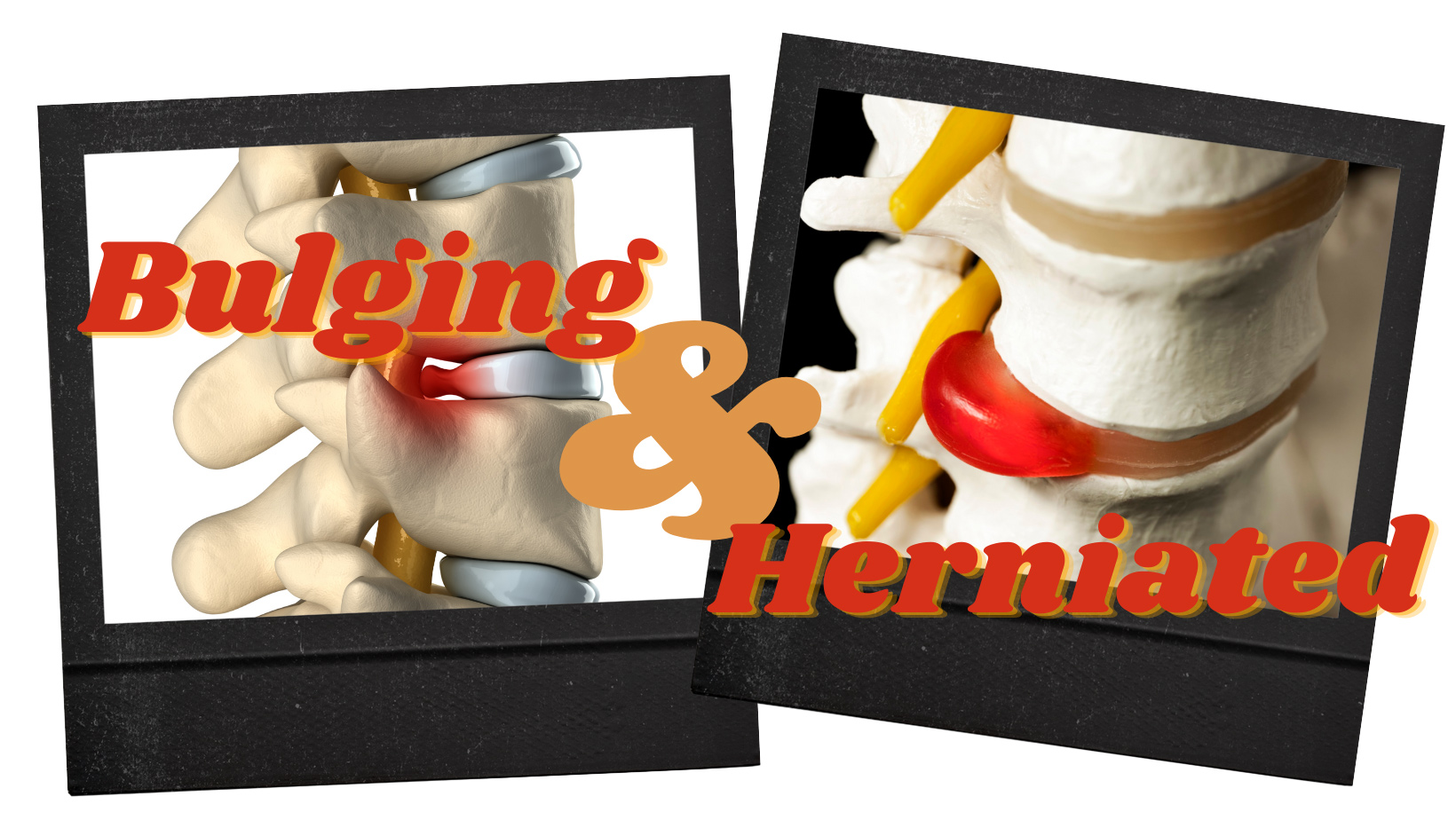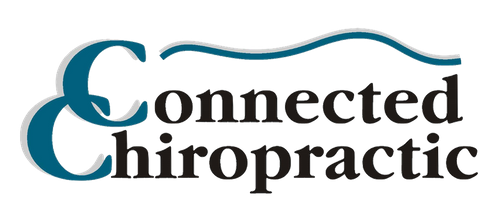Chiropractic Can Help Bulging and Herniated Discs
You have probably heard of the term disc before, and therefore, the phrase bulging and herniated discs. You also may know that they involve your spine. Bulging and herniated discs do not bring up happy feelings or sound normal. This is because they are not normal for your spinal structure and often result in pain, inflammation, and other uncomfortable symptoms. It is best to identify if you are suffering from bulging and herniated discs early so that you can begin to take preventative measures before the issue leads to bigger problems. The good news is that the board-certified chiropractic care at Connected Chiropractic in Johnstown can help your body heal and get you back to living the life you want.

Are Bulging and Herniated Discs the Same?
The answer to this question is no. While both bulging and herniated discs affect the discs within the spine, they are used to describe two different conditions. The key to understanding the difference is knowing the structure of both the spinal column and its discs. The spinal column is made up of three main parts, the bones (vertebrae), the cushioning discs, and the bundle of nerves that run along it (spinal cord).
The intervertebral discs consist of a strong outer layer of cartilage that has a softer cartilage in the center to allow for better movement. They are similar to a water balloon! With a bulging disc, only the outer layer is affected. Imagine some of the water evaporating out of the balloon allowing for less support, making the balloon easier to squish. This causes the water to push harder against the outside and results in a “bulge” on one or more sides of the balloon.
With a herniated disc, the outer layer develops a hole or tear. This causes the middle, jelly-like filling of the disc to leak out into the spinal canal. Only the area with the damage is affected in this situation. What if your balloon had a small hole, what would happen to the water and its shape? Nothing good. This is why it is so important to address bulging and herniated discs before the damage becomes severe and it results in other problems within the body. Herniated discs also tend to cause more pain because it sticks out farther than a bulging disc and leads to inflammation in the surrounding area. While both bulging and herniated discs compress the surrounding nerve roots, the inflammation that results from a herniation is more irritable to the nerve roots around the affected disc.
What Causes Bulging and Herniated Discs?
At Connected Chiropractic, we understand that the causes of bulging and herniated discs stem from the “3 Ts.”
- Trauma – Physical Stress
- Toxins – Chemical Stress
- Thoughts – Emotional Stress
Bulging and herniated discs both result from damage to the discs within the spine. However, they are commonly caused by different things because they are at different stages of damage. Bulging discs are the result of aging and natural deterioration. As we age, discs lose moisture, and their cartilage stiffens as a result. This leads to bulging because of the weakened outer layer of cartilage. If left unaddressed, bulging discs lead to bigger problems such as stenosis, osteoarthritis, and herniation.
Herniated discs are the worsening of a bulging disc or often occur from an injury because it adds too much strain to an already damaged area. Once the discs are at a point of degeneration that has caused excess bulging or damage to the outer layer of cartilage, that outer layer eventually cracks and leaks. This is when it is classified as a herniated disc. Certain lifestyle choices can increase your risk of developing bulging and herniated discs.
These include:
- A Sedentary Lifestyle. Being stationary for long periods of time leads to a greater risk of dehydration within the discs. Movement is essential when it comes to encouraging the flow of nutrients and fluid into the discs.
- High Impact Exercise or Activities. With certain sports, exercises, and activities such as running, football, aerobics, and gardening, there are repetitive actions that cause excess force within the spine. It worsens with movement that involves a lot of bending and twisting. This adds extra stress and wear to the spinal discs that lead to a weakened outer layer, bulging, and herniation. Be sure to always use proper technique to ensure the least amount of stress possible.
- Heavy Lifting. Serious unwanted pressure is placed on the spine when you lift heavy objects without bending your knees. If it is heavier than 20 pounds, be aware of how you are lifting it!
- Obesity. Excess weight adds strain to the discs and increases the everyday wear-and-tear to one or more intervertebral discs.
- Poor Diet. If you are not eating healthy or correctly, you are not providing your discs with proper nutrients to help them repair any damage. It is also important to drink lots of water as fluid helps to keep discs from flattening and allows them to properly heal.
- A Poor Sleeping Position. Since our bodies heal at night, the spinal discs rehydrate while we sleep. This increases the weight of the discs and sleeping in certain positions makes this weight add strain to the wrong areas of the spine. Avoid sleeping on your stomach, if possible, and place a pillow in between your legs to relieve strain when sleeping on your side.
- Smoking. The chemicals in cigarettes lead to the weakening of intervertebral discs. It can also increase the risk of dehydration, which is a major factor in the development of disc degeneration.
Symptoms of Bulging and Herniated Discs
The symptoms of bulging and herniated discs vary based on the damage of the disc, the position of the disc, and the size of the bulge or herniation. If the disc has a slight bulge that is not applying pressure on a nerve, there may be no pain at all. However, there could also be a dull ache around the affected area. Once there is pressure on a nerve, that is when the location and severity become known.
The bulging and herniated discs could cause pain, weakness, numbness, or tingling in the area of the body that the affected nerve travels along. If the affected disc is located within the lower (lumbar) area of the spine, it could cause sciatica, lumbar scoliosis, or osteoarthritis. If the bulging and herniated discs are located in the neck (cervical area), it could lead to a dull or sharp pain in that area and between the shoulder blades. It could cause the pain to radiate to other areas of the upper body such as the arm, hand, and fingers. The pain resulting from the pressure applied to the nerves by the bulging and herniated discs may increase if you place your body in certain positions or move in ways that could irritate the nerve further.
Other clinical issues are often associated with bulging and herniated discs. These include bowel problems such as constipation, diarrhea, cramping, gas, and even hemorrhoids and varicose veins. Reproductive disorders can also be associated with bulging and herniated discs. Symptoms related to this include prostate problems, impotence, painful periods, and menopause-related issues.
Is Chiropractic Care a Solution for Bulging and Herniated Discs?
Yes! Our board-certified chiropractor can provide a non-invasive and non-surgical solution to bulging and herniated discs. Connected Chiropractic gives you multiple avenues and options to give you relief from the symptoms and gives your body the tools it needs to heal itself. According to the Southwest Scoliosis and Spine Institute1, most cases of bulging and herniated discs take anywhere from 2 – 4 months to heal. The key is to not rush the process, not become impatient with the recovery time, and to allow the discs to fully recovery before overdoing it with too much activity.
Chiropractic Treatment
- Chiropractic Adjustments: By using different techniques to realign the vertebrae, our skilled chiropractor relieves the pressure on the discs. Over time, this will reverse the bulge or protrusion of the bulging and herniated discs. Once the bulge or herniation is less severe, or even non-existent, the extra strain placed on the nerves reduces your pain and other symptoms while allowing your discs to recover.
- Spinal Decompression: Decompression therapy can correct bulging and herniated discs by relieving the stress on the disc. It gently stretches your spine, increasing the space between the vertebrae. This space allows the discs slip back into position, encourages the flow of needed nutrients and fluid into the damaged discs, and relieves the pressure on surrounding nerves.
- Heat and Cold Therapy: It is best to use ice for the first 24 – 48 hours when severe pain is noticed from an injury, movement, or activity that may have resulted in a bulging or herniated disc. Ice numbs the affected area to soothe initial pain while reducing inflammation. After that, you can use whichever works best for you. Heat releases tight muscles and relieves painful muscle spasms.
- Ultrasound Therapy and Electrotherapy: Ultrasound, TENS Units, and Interferential Current can be used to reduce pain by increasing blood flow. The vibrations that result from both therapies increase the heat in the soft tissues that relax muscles and reduce muscle spasms. It also allows for easier stretching in the tissues to combat compressive pressure.
- Exercise Therapy & Education: Certain movements, activities, and exercises can worsen the symptoms and damage of bulging and herniated discs. Connected Chiropractic educates patients who are suffering from the painful symptoms by advising which types of exercises should be avoided, which exercises will be most beneficial, and proper techniques to use when doing said exercises and other daily activities.
- Lifestyle Changes: Connected Chiropractic’s skilled staff helps patients study and examine every aspect of their lives. With sedentary jobs becoming more popular and abundant, simple suggestions for a more ergonomic workspace and habits can go a long way in improving your overall health. Dietary changes and supplements can also be recommended to encourage natural healing within the spinal discs.
Don’t live another day with symptoms from bulging and herniated discs! Chiropractic care can provide relief and access to our board-certified chiropractor is just a phone call away or click away! Schedule an appointment online today by clicking on the “Schedule Healing Now” button below!
Clinic Location
32 S Rutherford Ave,
Johnstown, CO, United States, Colorado
(970) 587-7029
Clinic Hours:
Monday: 9am-11am / 3pm – 6pm
Tuesday: 9am-11am / 3pm – 6pm
Wednesday: 9am-11am / 3pm – 6pm
Thursday: 9am-11am / 3pm – 6pm
Friday: CLOSED
Saturday: CLOSED
Sunday: CLOSED
What Our Patients Are Saying...
At Connected Chiropractic, we’re proud to have earned the trust and loyalty of the Johnstown and Northern Colorado communities. From helping individuals overcome complex issues to supporting families in achieving their wellness objectives, we take pride in providing effective care that makes a difference. Hear what others have to say about our chiropractic clinic and how we successfully manage their health!
